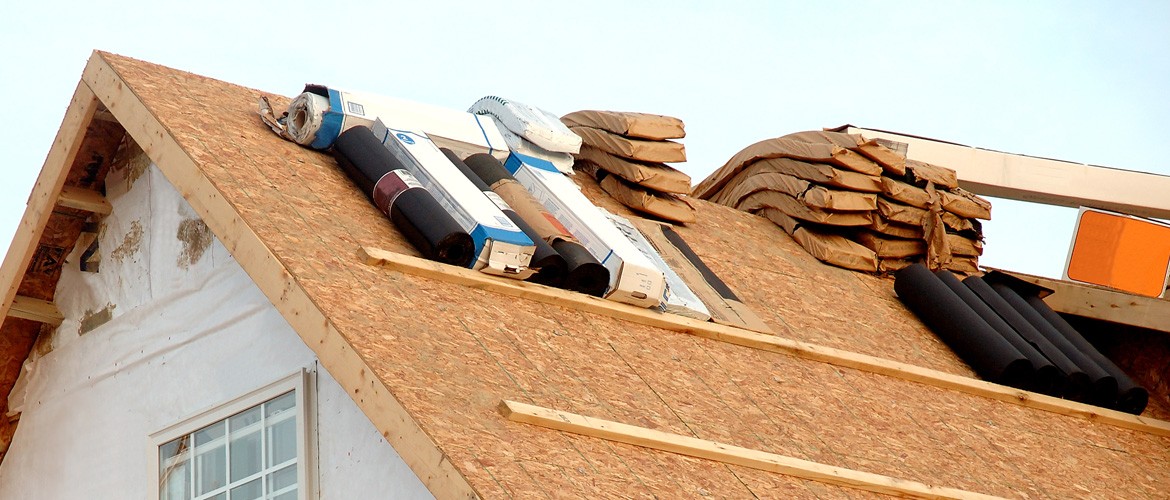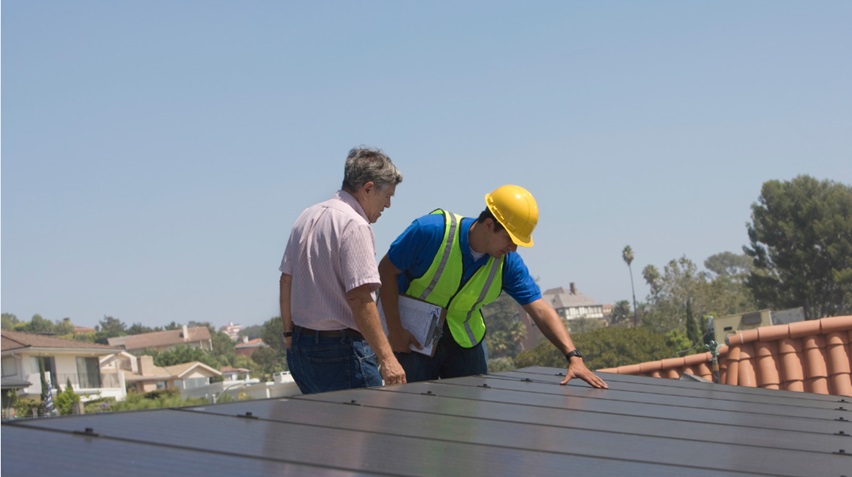The Role of Underlayment in Roofing

Meta Title:
Meta Description:
Url: role-underlayment-roofing
What is Underlayment?
Underlayment is a crucial component of any roofing system and done professionally by los angeles roofers. It refers to a layer of material that is installed between the roof deck and the roof covering. Its primary function is to provide an additional protective barrier against moisture, temperature changes, and other elements that could potentially damage the roof. Underlayment is typically made from asphalt-saturated felt, rubberized asphalt, synthetic materials, or modified bitumen.
Importance of Underlayment
The underlayment plays a vital role in the overall performance and durability of a roofing system. It provides an extra layer of protection against water intrusion, helps to regulate temperature, improves energy efficiency, reduces noise transmission, and offers added fire resistance. Without proper underlayment, the roof deck and the entire roofing system are more susceptible to damage and premature failure.
Types of Underlayment
Asphalt-saturated felt underlayment
Asphalt-saturated felt underlayment, also known as roofing felt or tar paper, is one of the most commonly used types of underlayment. It consists of organic or fiberglass mats that are saturated with asphalt and then coated with mineral granules. It provides a reliable moisture barrier and is relatively inexpensive compared to other options.
Rubberized asphalt underlayment
Rubberized asphalt underlayment is a more advanced type of underlayment that offers superior waterproofing properties. It is made from asphalt mixed with rubber compounds, which enhances its flexibility and durability. Rubberized asphalt underlayment is commonly used in areas with heavy rainfall or extreme weather conditions.
Synthetic underlayment
Synthetic underlayment is a modern alternative to traditional asphalt-saturated felt. It is made from synthetic materials such as polyethylene or polypropylene, which provide excellent tear resistance and dimensional stability. Synthetic underlayment is lightweight, easy to handle, and offers enhanced protection against water intrusion.
Self-adhering underlayment
Self-adhering underlayment, also known as peel-and-stick underlayment, is a convenient option that eliminates the need for nails or other fasteners. It has an adhesive backing that allows it to adhere directly to the roof deck. Self-adhering underlayment provides a strong and secure bond, making it ideal for steep-slope roofs or areas prone to high winds.
Modified bitumen underlayment
Modified bitumen underlayment is a type of underlayment that combines asphalt with modifiers such as rubber or plastic. This enhances its overall performance and durability. Modified bitumen underlayment is commonly used in areas with extreme temperature fluctuations or exposure to UV radiation.
Benefits of Underlayment
Enhanced Roof Durability
One of the key benefits of underlayment is that it helps to extend the lifespan of the roof. By providing an additional layer of protection against moisture and other elements, underlayment helps to prevent premature deterioration of the roof deck and the roof covering.
Improved Energy Efficiency
Underlayment can contribute to better energy efficiency in a building. Certain types of underlayment, such as reflective or insulated variants, help to reduce heat transfer, keeping the interior of the building cooler in hot climates and reducing the demand for air conditioning.
Moisture Protection
One of the primary functions of underlayment is to provide a barrier against water intrusion. It helps to prevent water from seeping into the roof deck, which can lead to rot, mold growth, and structural damage. Properly installed underlayment is essential for maintaining a watertight roofing system.
Noise Reduction
Underlayment can also help to reduce noise transmission from the exterior to the interior of a building. It acts as a sound barrier, absorbing and dampening noise from rain, hail, and other sources. This can create a quieter and more comfortable living or working environment.
Added Fire Protection
Certain types of underlayment, such as rubberized asphalt or modified bitumen, offer increased fire resistance. They have a higher resistance to ignition and can help to limit the spread of flames in the event of a fire. This added fire protection can provide valuable time for occupants to evacuate and for firefighters to respond.
Installation Process
The installation of underlayment typically occurs after the roof deck has been prepared and before the roof covering is applied. The underlayment is rolled out in overlapping layers to create a continuous and waterproof barrier. Nails, staples, or adhesives may be used to secure the underlayment to the roof deck, depending on the type of underlayment being used and the specific installation requirements.
Common Underlayment Mistakes
Incorrect installation of underlayment
One common mistake is improper installation of the underlayment. This includes not following the manufacturer’s instructions, failing to overlap the underlayment correctly, or not securing it properly to the roof deck. These errors can compromise the effectiveness of the underlayment and lead to water infiltration.
Using the wrong type of underlayment
Using the wrong type of underlayment for the specific roofing system can result in problems. Each type of underlayment has its own unique characteristics and is designed for specific applications. Using an incompatible underlayment can diminish its performance and potentially void any warranties.
Insufficient or overlapping underlayment
Insufficient underlayment coverage or inadequate overlapping can leave vulnerable areas of the roof exposed to moisture. This can lead to leaks, water damage, and ultimately compromise the integrity of the entire roofing system. It’s important to ensure that the underlayment is installed correctly and provides complete coverage.
Failure to properly secure underlayment
Underlayment needs to be securely fastened to the roof deck to prevent it from lifting or shifting during high winds or heavy rain. Failing to properly secure the underlayment can result in water infiltration and damage to the roof deck and interior of the building.
Neglecting to check underlayment for damage or deterioration
Over time, underlayment can become damaged or deteriorate due to weather exposure or other factors. It is crucial to regularly inspect the underlayment to identify any signs of damage or wear. If any issues are detected, prompt repairs or replacement should be carried out to maintain the effectiveness of the underlayment and prevent further damage to the roofing system.
Factors to Consider When Choosing Underlayment
Climate and Weather Conditions
The climate and weather conditions in the local area play a significant role in determining the type of underlayment that is most suitable. For example, areas with high rainfall or snowfall may require a more robust underlayment with superior waterproofing capabilities.
Roofing Material Compatibility
Not all types of underlayment are compatible with every roofing material. It is essential to select an underlayment that is specifically designed to work with the chosen roofing material to ensure proper installation, optimal performance, and longevity of the roof.
Building Code Requirements
Building codes and regulations often specify certain standards and requirements for underlayment, depending on the location and the type of building. It is crucial to adhere to these requirements to ensure compliance and the safety of the structure.
Budget and Cost Considerations
Budget is an important factor when choosing underlayment. Different types of underlayment have varying costs, and it is essential to find a balance between quality and affordability. It is important to remember that investing in high-quality underlayment can help to prevent costly repairs and replacements in the future.
When to Replace Underlayment
While underlayment is designed to be durable and long-lasting, there may come a time when it needs to be replaced. Signs that underlayment may need replacement include visible damage, such as tears or cracks, water leaks, or excessive wear and deterioration. Regular inspections by a professional roofing contractor can help identify when underlayment replacement is necessary.




